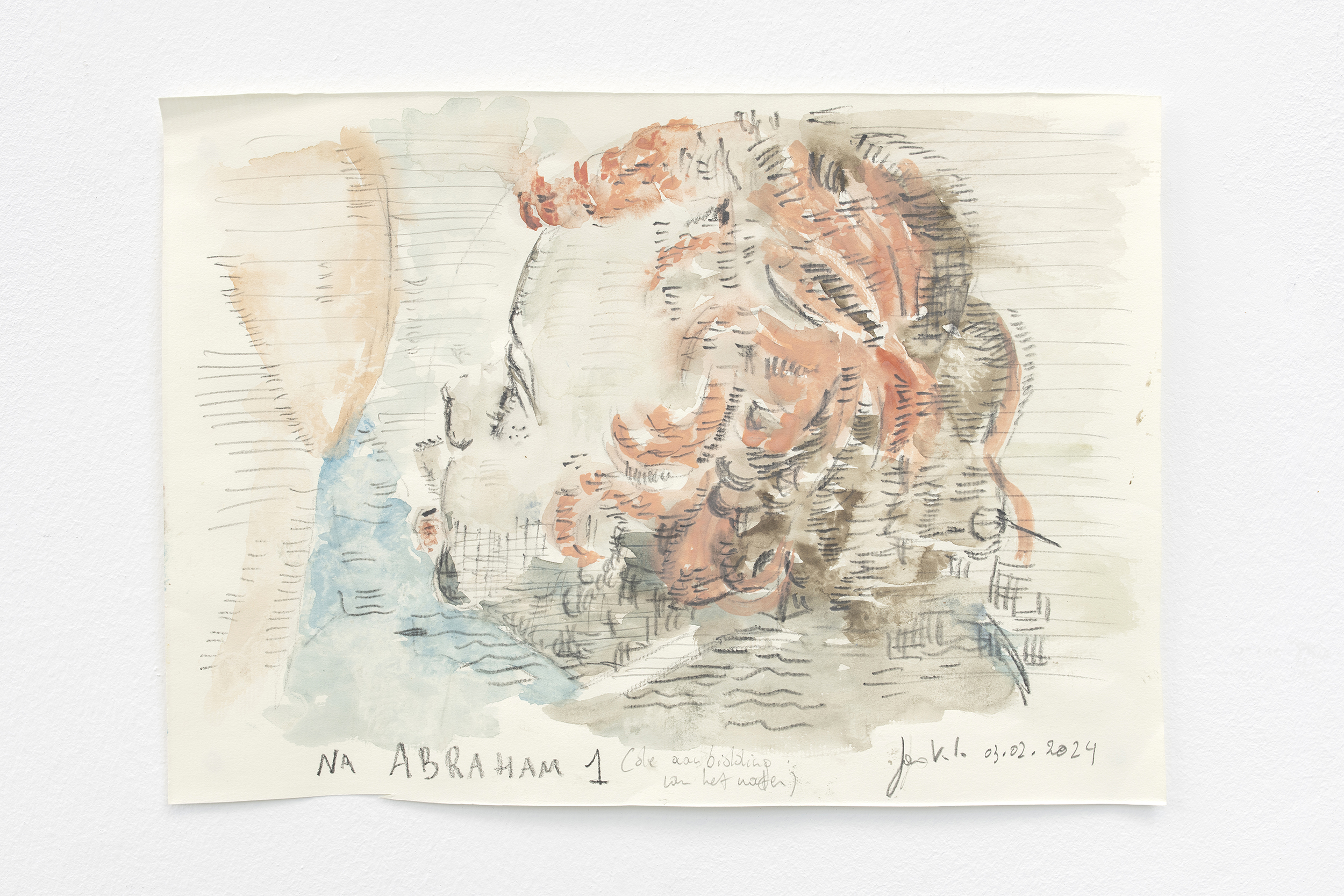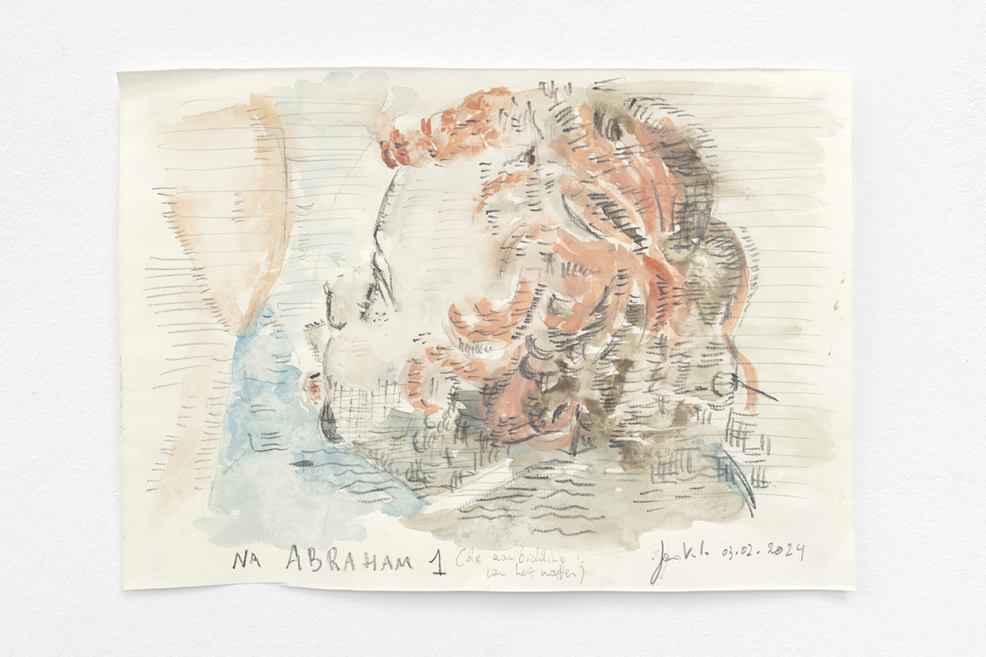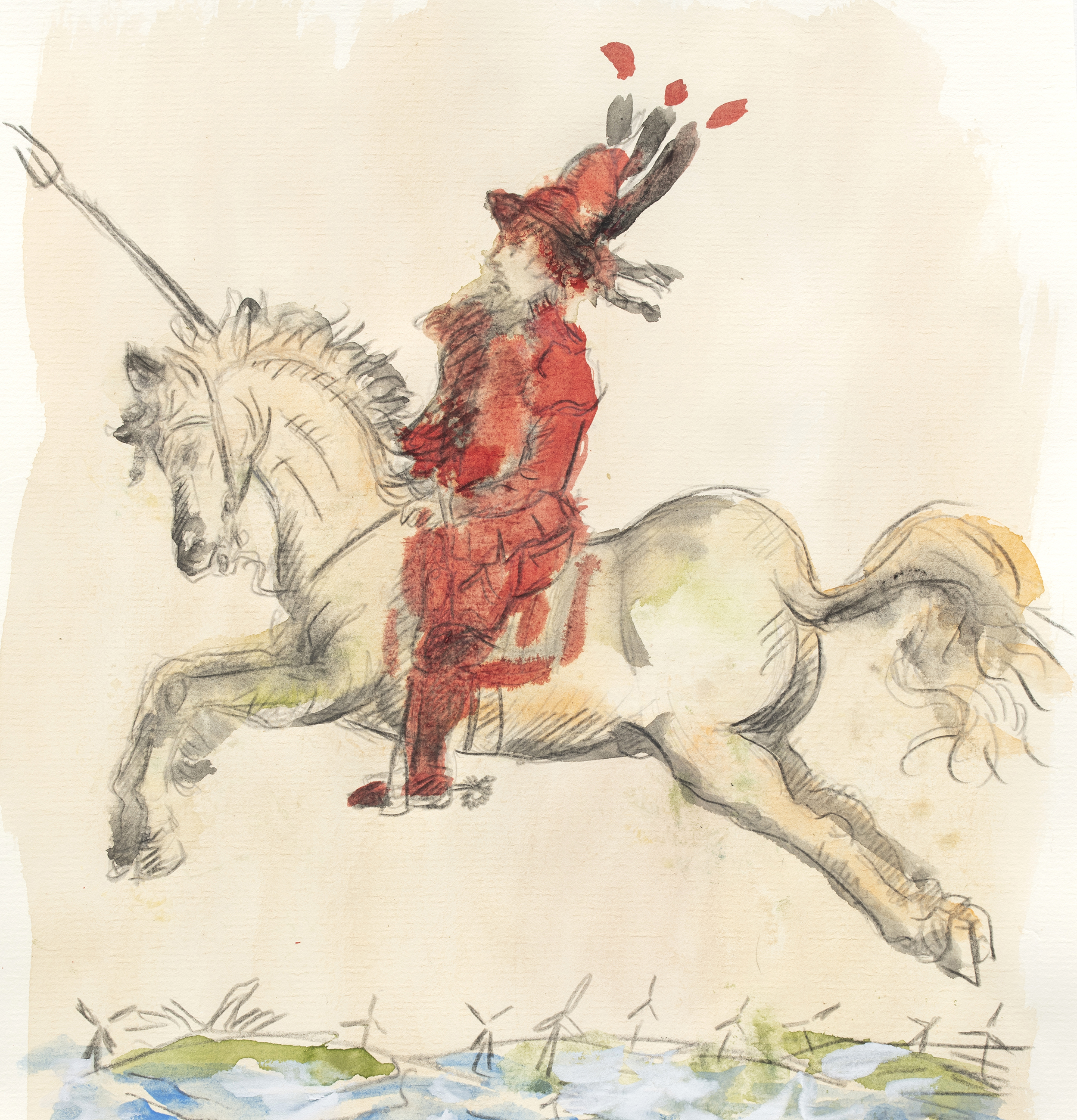
Jan Van Imschoot
After Paradise – Triennal Kortrijk
For the After Paradise – Triennial, Van Imschoot created the piece After Abraham (2006-2024) with 42 drawings. The emblematic scenes are a mix of 9 original design drawings for Monument for 1302 and 31 new drawings inspired by the work of Abraham van Diepenbeeck.
Van Imschoot belongs to a generation of artists who led to the revaluation of figurative painting in the 1990s. He paints from a deep art-historical awareness. He tells stories and likes to draw inspiration from other storytellers in art, literature and cinema. In his creative universe, he finds it important to interact with art history in a playful way, because “without playfulness, you kill art”.
In his 2006 painting Monument for 1302 in Kortrijk’s historic city hall, he evokes the spirit of the 1302 Battle of the Golden Spurs in Kortrijk in contemporary form.
The mural links this historical battle with the 19th and 20th century reimagining of it. One angle is the contrast between Hendrik Conscience, who was commissioned by Leopold I to write the historical novel The Lion of Flanders in 1838 and Ernest Claes, whose young character Whitey is seen reading The Lion of Flanders and reenacting the Battle of the Golden Spurs in the Flemish 1969 television series ‘We, Gentlemen of Zichem’. Van Imschoot was inspired by the tension between Flemish ethnic nationalism and Belgian state nationalism. The Flemish character of Whitey gave him the idea of depicting the Battle of the Golden Spurs as a children’s game. He therefore presents the Flemish as girls and the French as boys in the battle. Van Imschoot used photos of real boys and girls from Kortrijk for this.

Abraham 1

The artist

Born in 1963 in Ghent, Jan Van Imschoot has been living and working in France since 2013. Jan Van Imschoot’s exploration of the possibilities offered by painting have resulted in a body of work that draws its power from highly critical and dramatic themes and contains references to countless artists, from Tintoret to Luc Tuymans, Goya to Matisse. Jan Van Imschoot places his figures, decors and narratives at History’s margins, using assembled perspectives, strong tones, bodies in motion and brushwork he describes as ‘anarcho-baroque’. His work delves into a number of recurring motifs: freedom, censorship and the violence of political and ideological systems.
